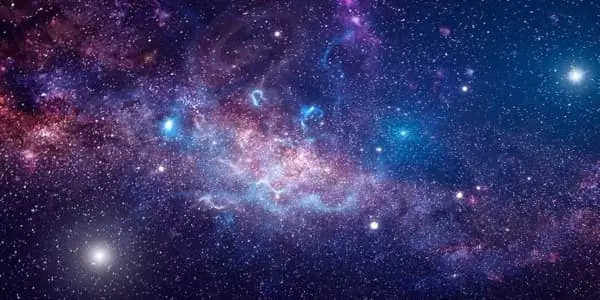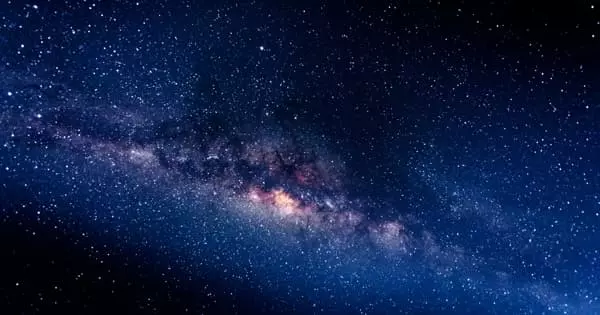During the pandemic, a husband-and-wife team of astronomers at The University of Toledo collaborated for the first time in their scientific careers to develop a new method to look back in time and change the way we understand the history of galaxies.
Dr. Rupali Chandar, professor of astronomy, and Dr. J.D. Smith, director of the UToledo Ritter Astrophysical Research Center and professor of astronomy, merged their areas of expertise after previously forging parallel but separate careers while juggling home life and carpooling to cross country meets.
Working with UToledo alumnus Dr. Adam Smercina, who earned a bachelor’s degree in physics in 2015 and is now a postdoctoral researcher at the University of Washington, they used NASA’s Hubble Space Telescope to focus on S12, a post-starburst galaxy nearly 500 million light-years away that resembles a jellyfish with a slew of stars streaming out on one side.
Smercina, the “glue” that brought Smith and Chandar together on this research, began working with Smith as an undergraduate student on dust and gas in post-starburst galaxies in 2012. While spiral galaxies such as our Milky Way have continued to form stars at a fairly steady rate, post-starburst galaxies experienced an intense burst of star formation sometime in the last half-billion years, effectively shutting down star formation.
Clusters are like fossils in that they can be age-dated and provide us with information about the past history of galaxies. Clusters in these galaxies can only be detected using the Hubble Space Telescope’s clear eyed view. Even the highest quality images taken with ground-based telescopes show no evidence of clusters.
Dr. Adam Smercina
The resulting groundbreaking research, published in the Astrophysical Journal, outlines their new method for determining a post-starburst galaxy’s star formation history using its cluster population. The method employs stellar cluster age and mass estimates to calculate the strength and speed of the starburst that prevented more stars from forming in the galaxy. Using this method, the astronomers discovered that S12 had two periods of starburst before it stopped forming stars, rather than one.
“Post-starbursts represent a phase of galaxy evolution that is fairly uncommon today,” Smith said. “We believe that nearly half of all galaxies experienced this phase at some point in their lives. Their star-forming histories have so far been determined almost entirely through detailed modeling of their composite starlight.”
Smith has studied post-starburst galaxies for more than a decade, and Chandar works on the stellar clusters in galaxies that are typically about three or four times closer than those in Smith’s data.

“Clusters are like fossils in that they can be age-dated and provide us with information about the past history of galaxies,” Chandar explained. “Clusters in these galaxies can only be detected using the Hubble Space Telescope’s clear eyed view. Even the highest quality images taken with ground-based telescopes show no evidence of clusters.”
Smith has led a number of large multi-wavelength projects to better understand the evolution of post-starburst galaxies. For example, he discovered that the raw fuel for star formation, gas and dust, is still present in surprising quantities in some of these systems, including S12, despite the fact that no stars are currently being formed.
“While studying the light from these galaxies at different wavelengths has helped us establish the time that the burst occurred, we haven’t been able to determine how strong and how long the burst that shut off star formation actually was,” Smith said. “And this is important to understand how these galaxies evolve.”
The astronomers developed the new method by using well-studied cluster masses and star formation rates in eight nearby galaxies. It could be used to determine the recent star formation histories of a variety of post-starburst systems. The researchers took a unique approach to S-12, which stands for SDSS 623-52051-207 and was discovered and cataloged in the Sloan Digitized Sky Survey (SDSS).
“It must have had one of the highest rates of star formation of any galaxy we’ve ever studied,” said Chandar. “S12 is the most distant galaxy on which I’ve ever worked.” According to the study, star formation in S12 ceased 70 million years ago after a brief but intense burst formed some of the most massive clusters known, with masses several times greater than those forming in actively merging galaxies of similar age. The method also revealed an earlier burst of star formation that was missed by the previous composite starlight modeling method.
“These findings imply that S12’s unusual history may be even more complicated than previously thought, with multiple major events combining to completely shut off star formation,” Smith said. The National Science Foundation and NASA funded the study.





